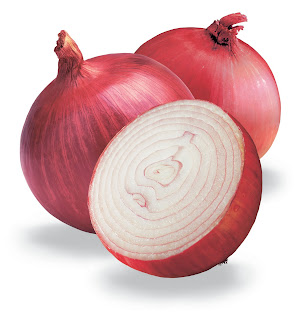 It’s that time of year when you may be called upon to whip up a brunch for Mothers Day…or a Bridal Shower…or a Baby Shower…or a Graduation party…or any number of other late-spring and early-summer celebratory occasions. Or maybe you’re in the habit of making brunch for your family “just because!” I have a lot of favorite brunch recipes, but this one is a healthy choice and works beautifully at this time of year when asparagus (and leeks!) are in season at last.
It’s that time of year when you may be called upon to whip up a brunch for Mothers Day…or a Bridal Shower…or a Baby Shower…or a Graduation party…or any number of other late-spring and early-summer celebratory occasions. Or maybe you’re in the habit of making brunch for your family “just because!” I have a lot of favorite brunch recipes, but this one is a healthy choice and works beautifully at this time of year when asparagus (and leeks!) are in season at last.
I had this for the first time when my Godmother made it for me at her home when I was visiting and it’s been in my repertoire ever since. It’s a nice alternative to the heavier sausage and cheese brunch casseroles that are so prolific and I like to pair it with something homemade and sweet and a delightful bowl of fresh fruit to round out the meal. It might also pair nicely with some turkey sausage now that I think about it!
Enjoy all your upcoming brunch occasions!
Fontina, Asparagus, and Leek Strata
adapted from Cooking Light circa 1999
6 generous servings
1 Tbsp. butter
5 c. sliced asparagus in 1″ pieces (about 1 1/2 pounds)
2 c. thinly sliced leeks – whites and light green parts (about 3 small)
1/2 c. water
3 Tbsp. chopped fresh parsley
2 tsp. grated lemon rind
1/2 tsp. salt
1/4 tsp. black pepper, divided
12 (1-ounce) thin slices dense whole wheat bread
1 c. (4 oz.) shredded fontina cheese, divided
2 1/2 c. skim or 1% lowfat milk
3 large eggs
1 large egg white
1 1/2 c. fresh breadcrumbs (about 3 slices, diced)
cooking spray
Melt butter in a large nonstick skillet over medium-high heat; add asparagus, leeks, and water. Bring to a boil; cover, reduce heat, and simmer for 10 minutes or until tender, stirring occasionally. Stir in parsley, lemon rind, salt, and 1/8 teaspoon pepper.
Arrange half of bread slices in a single layer in a 13 x 9-inch baking dish coated with cooking spray. Top bread slices with half of asparagus mixture, and sprinkle with 1/2 cup cheese. Repeat procedure with the remaining bread, asparagus mixture, and 1/2 cup cheese.
Combine 1/8 teaspoon pepper, milk, eggs, and egg white, and stir with a whisk until well-blended. Pour the milk mixture over strata. Cover strata, and chill for 8 hours or overnight.
Preheat oven to 400°.
Uncover strata; sprinkle with breadcrumbs. Bake at 400° for 40 minutes or until set.

